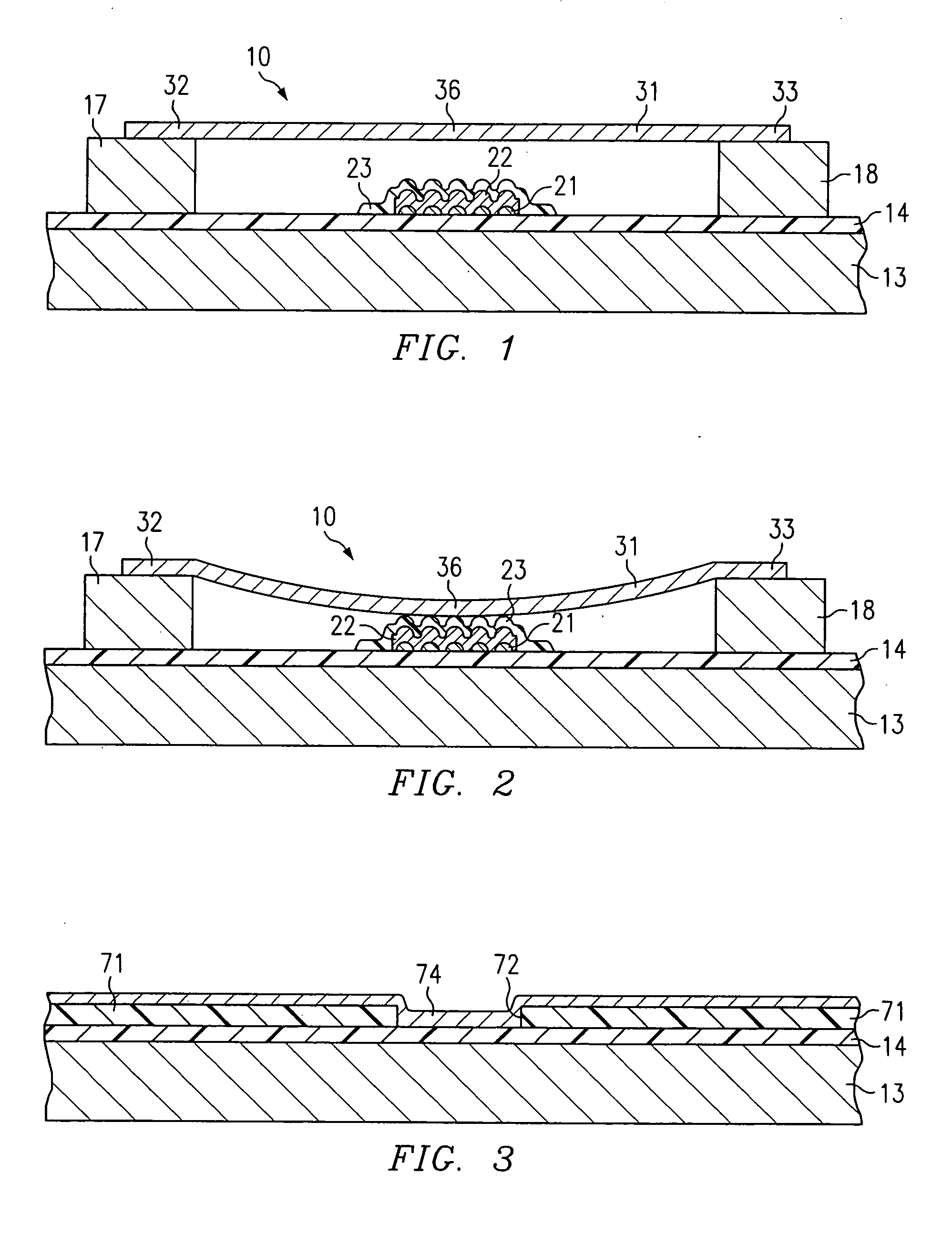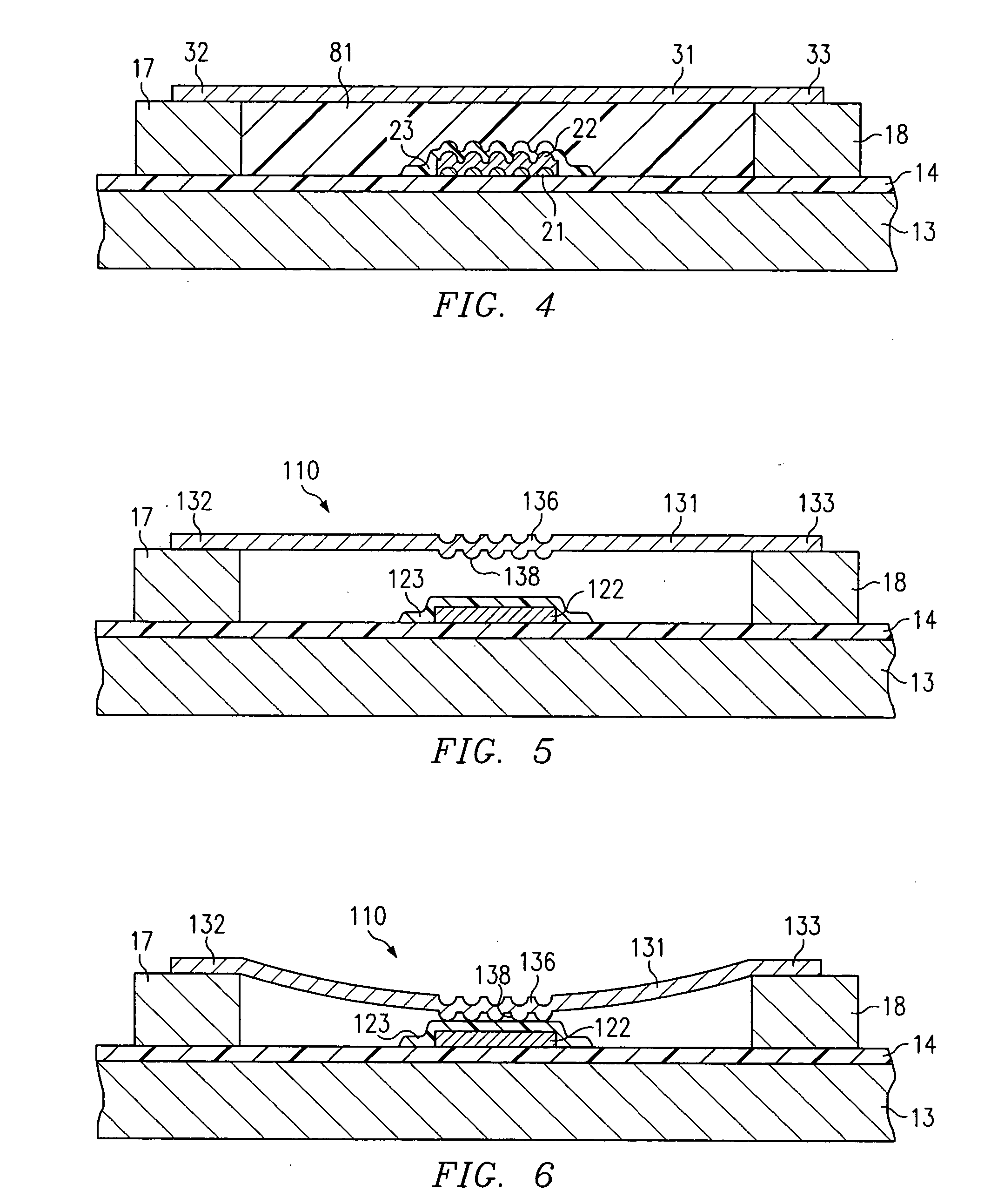Micro-electro-mechanical switch, and methods of making and using it
a micro-electro-mechanical switch and switch technology, applied in the field of switches, can solve the problems of not being able to carry the switch is no longer capable of carrying out the switching function, and the electric charge from the membrane can tunnel into and become trapped in the dielectric layer, etc., to achieve the effect of increasing the operational li
- Summary
- Abstract
- Description
- Claims
- Application Information
AI Technical Summary
Benefits of technology
Problems solved by technology
Method used
Image
Examples
Embodiment Construction
[0027]FIG. 1 is a diagrammatic fragmentary sectional side view of an apparatus which includes a micro-electro-mechanical switch (MEMS) 10, the switch 10 embodying aspects of the present invention. The drawings, including FIG. 1, are diagrammatic and not to scale, in order to present the switch 10 in a manner which facilitates a clear understanding of the present invention.
[0028] With reference to FIG. 1, the switch 10 includes a silicon semiconductor substrate 13 having on an upper side thereof an oxide layer 14. Although the substrate 13 is a made of silicon in this disclosed embodiment, it could alternatively be made of some other suitable material, such as gallium arsenide (GaAs), or a suitable alumina. Similarly, the oxide layer 14 is silicon dioxide in this disclosed embodiment, but could alternatively be some other suitable material.
[0029] Two posts 17 and 18 are provided at spaced locations on the oxide layer 14, and are each made of a conductive material. In this embodimen...
PUM
 Login to View More
Login to View More Abstract
Description
Claims
Application Information
 Login to View More
Login to View More - R&D
- Intellectual Property
- Life Sciences
- Materials
- Tech Scout
- Unparalleled Data Quality
- Higher Quality Content
- 60% Fewer Hallucinations
Browse by: Latest US Patents, China's latest patents, Technical Efficacy Thesaurus, Application Domain, Technology Topic, Popular Technical Reports.
© 2025 PatSnap. All rights reserved.Legal|Privacy policy|Modern Slavery Act Transparency Statement|Sitemap|About US| Contact US: help@patsnap.com



